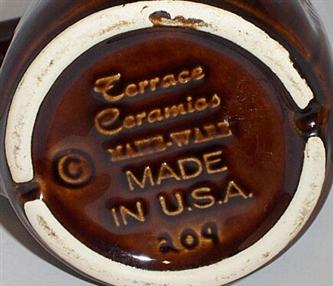Terrace Ceramics History

Terraces are found the world over throughout history.
Terrace ceramics history. Some show up with the word shawnee still intact. In europe burnt clay was already known in the late palaeolithic. This was made until around 1954 when sales dropped and a new line was created called queen corn this pottery had a darker green and a lighter yellow color. It is not unusual to find pieces with the shawnee numbers appearing on the bottom.
The terrace ceramics co of zanesville oh was a marketing company that never actually made pottery. A selection of over 100 masterpieces has been brought together to form the masterpieces timeline tracing developments in world ceramics from ancient times to the present. The jomon people a society of hunters were among the first in the world to create pottery vessels. 18 000 bce to 14 000 bce.
Their earthenware is characterized by a distinctive rope like pattern. Palaeolithic pottery pottery found in the japanese islands has been dated by uncalibrated radiocarbon dating to around the 11th millennium bc in the japanese palaeolithic at the beginning of the jomon period. Terraces were used extensively throughout greece in both public and private architecture and rooftop terraces can be found at knossos as early as 1700 bce. So some jars might look like a shawnee mold but were made by and marked terrace ceramics.
The ceramics collections at the v a are one of its greatest glories. So the american pottery of marietta oh was the user of the shawnee molds. This is the oldest known pottery. Sharp tools made from natural glass appear.
They are unrivalled in their range diversity and global reach. After the closing of shawnee pottery terrace ceramics obtained some of the corn king molds and produced some of the pieces but with a different color scheme. Terrace ceramics bought the shawnee molds when the company went out of business in 1961. Ceramic pottery spreads in eastern asia.
When we consider the history of ceramics and especially its popularity in the last century remember it exploded during the great depression as did the entertainment industry we can see ceramics and fired arts will always be with us for so many reasons. Japan s subsequent yayoi period 500 b c. The quality and design of the jars are definitely different and will usually not be confused with the real thing. 300 a d brought.
Mankind needs ceramics for functional reasons and for artistic reasons.



















